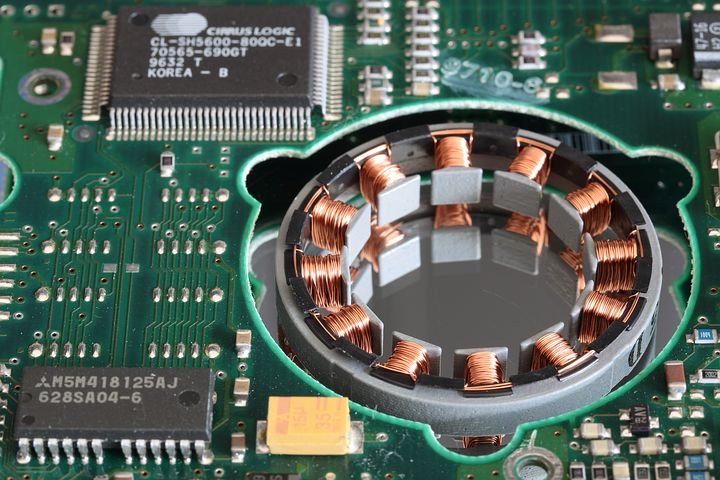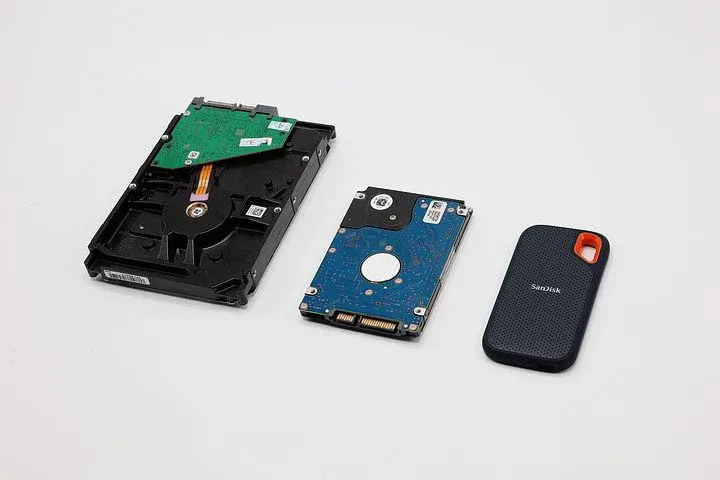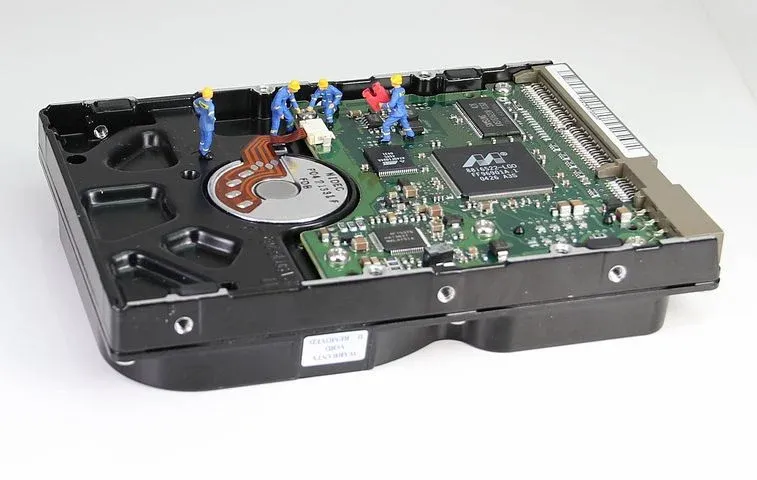Disk Drive
A hard disk drive (HDD), hard disk, hard drive or fixed disk is an electromechanical data storage device that uses magnetic storage to transfer digital information to one or more hard fast rotating disks (platters). Used in conjunction with to store and retrieve digital information. The claps are attached to magnetic heads, usually arranged on a dynamic stimulus arm, which reads and writes data on the surface of the claps. Data is retrieved in a random access manner, which means that individual blocks of data can be saved or retrieved in any order and not just in order. HDD is a type of immovable storage that retains storage data even when running.
Introduced by IBM in 1956, HDD became an important secondary storage device for general purpose computers until the early 1960s. Consistently improved, HDDs have maintained this position in the modern age of servers and personal computers. More than 200 companies have historically produced HDDs, although most units are manufactured by Seagate, Toshiba and Western Digital after extensive industry stabilization. HDDs dominate the volume of storage (annual excises) produced for servers. Although production is growing slowly, however, sales revenue and unit shipments are declining due to data transfer rates, higher air storage density, improved reliability, and much lower rates in solid state drives (SSDs). There are times of delay and arrival.
Tariffs for SSDs, most of which use NAND, are slightly higher than for HDDs. Although SSDs cost about 10 times more per bit, they are replacing HDDs where speed, power consumption, small size and durability are important.

Pixabay
The main features of HDD are its capability and performance. Capacity of 1000 is stated in the previous unit of power: 1-T-ray byte (TB) drive capacity is one thousand gigabytes (GB; where 1 gigabyte = 1 billion bytes). In general, some HDD capabilities are not available to the user because they are used by file systems and computer operating systems, and potentially built-in redundancies are used for error correction and recovery. ۔ Performance is determined by the time required to move the heads to the track or cylinder (average access time) as well as the time it takes (the time it takes to move the desired sector under the head) (average delay, which Revolutions are a function of the speed of physical rotation (per minute), and finally the speed at which data is transmitted (data rate).
The two most common factors for modern HDD are 3.5 inches, for desktop computers, and 2.5 inches, primarily for laptops. HDDs are connected to the system via standard interface cables such as PATA (Parallel ATA), SITA (Serial ATA), USB or SAS (Serial Connected SCSI) cables.

Pixabay
Equipment that records and reproduces data from a magnetic head by rapidly coating the aluminum disc (disk) with magnetic material. Disk diameters are 2.5 inches (primarily for laptop computers) and 3.5 inches (primarily for desktop PCs) are mainstream. Recording density is increasing year by year, with some having a capacity of more than a few terabytes in April 2013. The interface includes SCSI (Science) method and IDE method. It is usually sealed because of the risk of dirt and dust. Also, because the disk rotates fast, the hard disk generates heat on its own and is at risk of vibration, but it is widely used because it is relatively cheap.
→ Related Items Magnetic Disk | Storage | Flash memory drive | Memory | Random access.

Spacial Thanks
Best Regards



